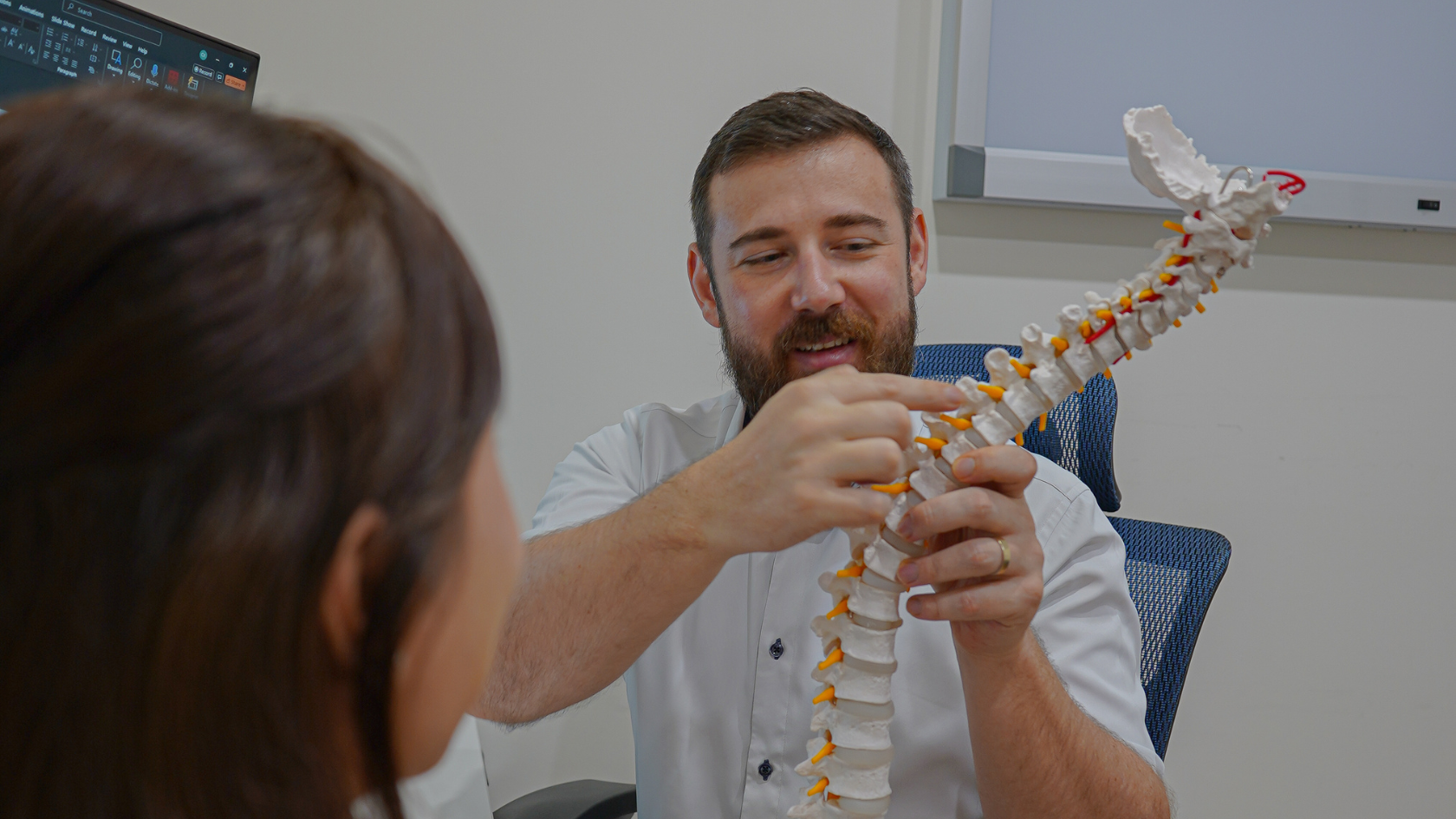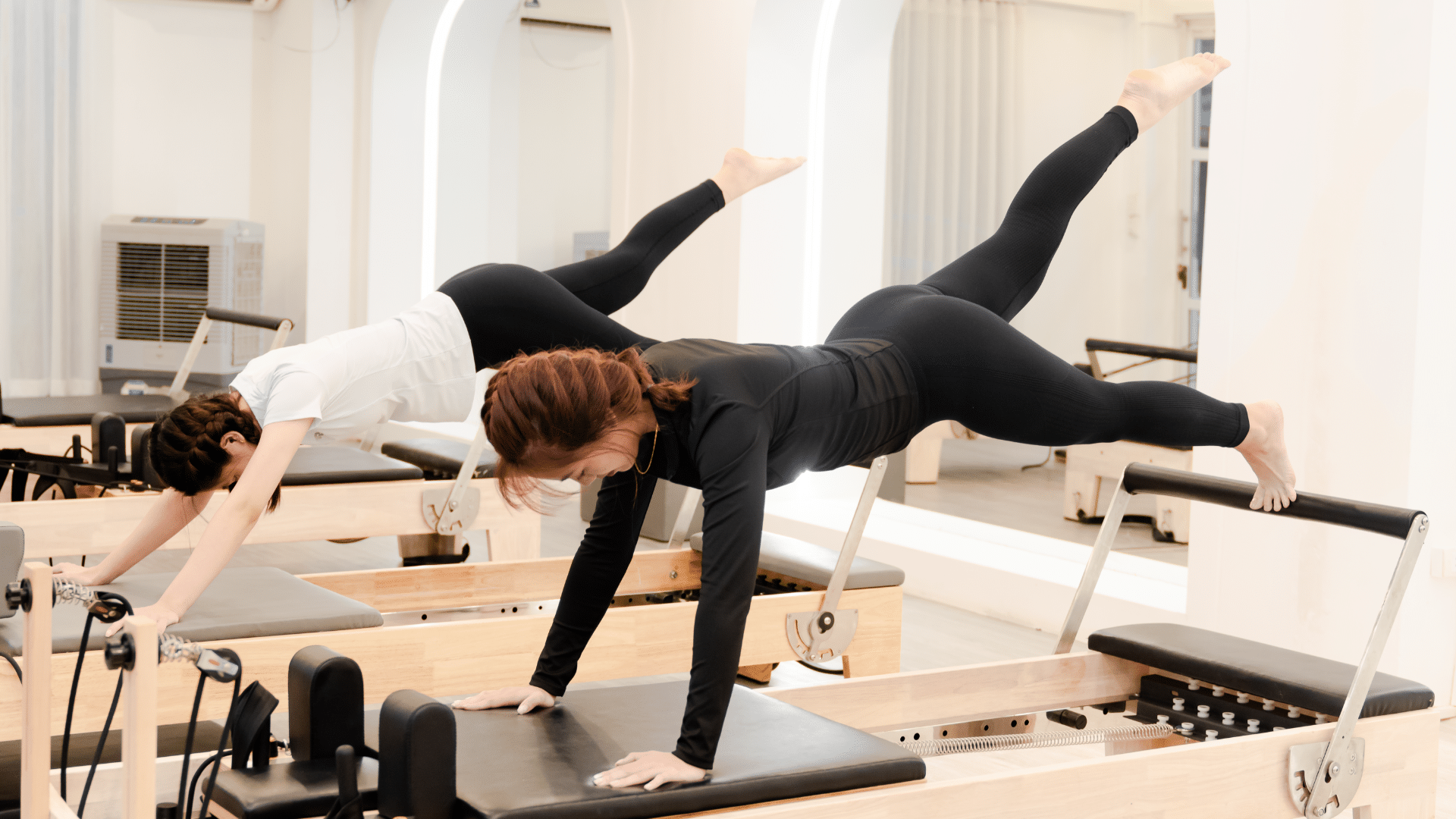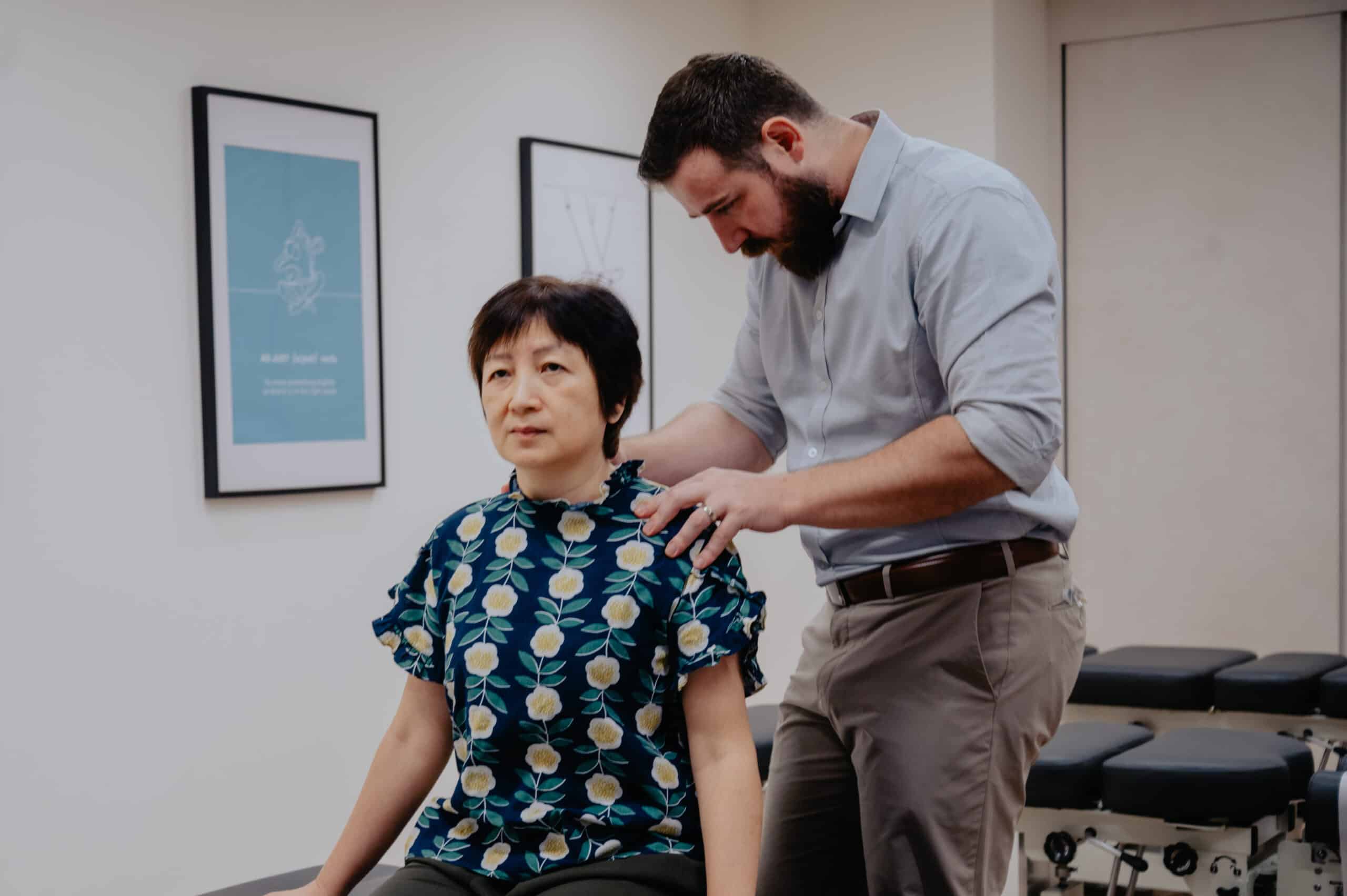Pain is a universal experience, but understanding what it means and how to manage it can drastically improve your quality of life. In Singapore, with our fast-paced, busy lifestyles, finding effective ways to manage pain—especially those that offer quick relief—has become increasingly important. This guide will dive into the different types of pain, what it signals about your body, some effective hacks and solutions for managing discomfort, and the larger importance of getting to the root cause of your pain.
What is pain and how does it work?
Pain is more than just a discomfort—it’s a vital signal in your nervous system that alerts you when something isn’t right. When your body experiences injury, strain, or stress, pain receptors send signals through your nerves to your brain, where the sensation of pain is registered. This process is your body’s way of protecting itself, urging you to take action and avoid further damage.
Pain can be acute, such as the sharp sensation from a cut, or chronic, like the persistent ache from a misaligned spine. The nervous system plays a crucial role in this, as it communicates with various parts of your body to assess and respond to potential threats. Understanding how pain works can help you manage it more effectively and find solutions that address the root causes rather than just the symptoms.

Types of Pain
- Nociceptive Pain: This is the most common type of pain, typically resulting from tissue damage. When you cut yourself, sprain your ankle, or have an injury, your body sends pain signals to your brain to protect the area. It’s your body’s way of saying, “Something’s wrong—fix it.” Nociceptive pain can be either acute (short-term) or chronic (long-term).
- Neuropathic Pain: This type of pain arises when there’s damage to the nervous system itself. Conditions like sciatica, carpal tunnel syndrome, or even a pinched nerve in your spine can cause neuropathic pain. It’s often described as sharp, shooting, or burning pain, and is more complex to treat because it involves your body’s electrical system—your nerves.
- Psychogenic Pain: Sometimes, pain is tied to emotional or psychological factors. Stress, anxiety, and even depression can cause or exacerbate pain, even when there’s no physical injury. Psychogenic pain can manifest as tension headaches, back pain, or other conditions that seem to have no apparent cause but are very real to the person experiencing them.
Are you making your pain worse?
Pain is often worsened by factors we aren’t even aware of. While some pain is inevitable, certain habits and behaviours can make it feel much worse. Here are a few reasons why your pain might feel more intense than it should:
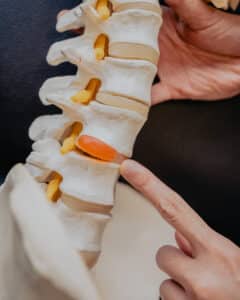 Misalignment in your body
Misalignment in your body
The alignment of your spine and joints plays a crucial role in how you experience pain. When your body is out of alignment—whether from bad posture, injuries, or day-to-day habits—it puts unnecessary pressure on nerves and muscles, which can amplify pain. This is where chiropractic care can make a significant difference. By realigning your spine and joints, chiropractic care reduces the strain on your nervous system, allowing your body to heal and reduce pain naturally.
Perception of pain
Your perception of pain is highly individual and can change based on your emotional and mental state. If you perceive pain as a sign of harm or danger, you might react with fear, which in turn makes the pain feel worse. Reframing pain as a signal that your body needs care—not as a threat—can reduce the stress and anxiety associated with it, helping you manage discomfort more effectively.
Negative thinking patterns
How you think about pain can influence how much you feel it. If you’re constantly worrying or fixating on your discomfort, it can become worse. Stress and anxiety heighten the body’s pain response, making even small aches feel unbearable. By practising mindfulness, meditation, or even positive visualisation, you can shift your mindset and lower the intensity of your pain.
Life hacks for pain: quick ways to manage pain
If you’re looking for some immediate relief, here are a few practical, at-home pain hacks that can help reduce discomfort:
Activating trigger points
- Golf ball roll: Roll a golf ball under your feet or along
 tight muscles. This is an easy way to release tension and improve circulation in problem areas like the feet, shoulders, or lower back.
tight muscles. This is an easy way to release tension and improve circulation in problem areas like the feet, shoulders, or lower back. - Foam roller: A foam roller can be used to release trigger points along your back, thighs, and calves. Regular rolling can help alleviate tightness and reduce muscle knots.
- Tennis ball for shoulder blades: Place a tennis ball between your shoulder blade and a wall. Lean into it, moving gently to massage out knots and tension in hard-to-reach areas.
Relieving Neck pain
- Denner Roll tractioning device: This specialised device helps realign the cervical spine, reducing pressure on the neck muscles and alleviating pain. Regular use can help with posture correction and long-term pain relief.
- Chin tucks: Sitting or standing with your back straight, tuck your chin toward your chest and hold for 5-10 seconds. This exercise helps strengthen the muscles around your neck and improves alignment.
- Neck rotations: Slowly rotate your neck in circles to increase mobility and reduce stiffness. This can help relieve tightness and tension that builds up from poor posture or stress.
Relieving Mid-back pain 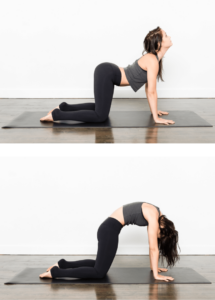
- Corner stretch / wall extensions / helicopters / twisters: These stretches are great for opening up the chest and reducing tension in the upper and middle back. The increased mobility in your thoracic spine can relieve tightness that often contributes to midback pain.
- Thoracic extensions: Sit on a chair with your hands behind your head, and arch your back over the chair’s edge. This stretch helps improve midback flexibility.
- Cat-Cow stretch: This yoga pose can help mobilise the spine and reduce stiffness in the middle back. Move slowly through each position, arching and rounding your back to stretch the muscles and spine.
Relieving Lower back pain
- Heels to heaven / Asian squat / calf stretches / spine stability exercises: Strengthening your core and stretching your lower body can provide instant relief for lower back pain. Exercises that improve posture and spinal stability can prevent future pain flare-ups.
- Child’s pose: This classic yoga pose helps stretch the lower back and hips, providing relief from stiffness and tension. Hold the pose for 30 seconds or longer to let your muscles relax.
- Pelvic tilts: Lie on your back with knees bent, and gently tilt your pelvis upwards, flattening your lower back against the floor. This simple movement can help reduce lower back pain and improve core stability.
Relieving Hip pain
- IT band / 90-90 stretch: Stretching your hip flexors and the surrounding muscles is a simple but effective way to release tension and improve flexibility. These stretches are particularly beneficial if you sit for long periods.
- Hip flexor stretch: Kneel with one foot in front, forming a 90-degree angle with your knee. Push your hips forward gently to stretch the hip flexors. Hold for 30 seconds, then switch sides.
- Figure-four stretch: Lie on your back, place one ankle over the opposite knee, and gently pull the leg toward you. This stretch helps relieve tension in the hips and lower back.
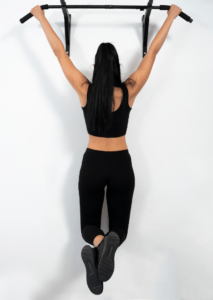 Pull-up bar hanging – 2 minutes a day
Pull-up bar hanging – 2 minutes a day
Hanging from a pull-up bar can help decompress your spine, improving mobility and reducing tension. Just two minutes a day can make a big difference. You can start with shorter durations and gradually build up to two minutes to avoid strain.
Relieving pain while sitting
- Get moving every 10-20 minutes: If you’re sitting for long periods, take breaks every 10-20 minutes to stand up and stretch. Using lumbar support like the Full Moon Lumbar Support can also help improve your posture while sitting.
- Seated figure-four stretch: While seated, cross one ankle over the opposite knee and lean forward slightly. This stretch can relieve hip tension caused by prolonged sitting.
- Standing hip flexor stretch: Stand and place one foot on a chair behind you, gently pushing your hips forward. This standing variation of the hip flexor stretch helps counteract the effects of sitting for long periods.
Extension
- Bridges, extension exercises, or sleep in extension: Exercises that involve extending your spine can help undo the negative effects of sitting and slouching. They also strengthen your back and core muscles, leading to better posture and less pain.
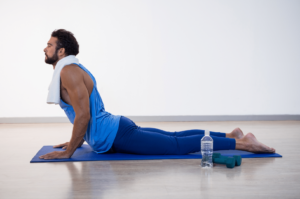 Superman pose: Lie face down and lift your arms and legs off the floor simultaneously. This exercise strengthens the lower back and encourages spinal extension.
Superman pose: Lie face down and lift your arms and legs off the floor simultaneously. This exercise strengthens the lower back and encourages spinal extension.- Cobra stretch: Lie on your stomach and press up through your hands, arching your back. This yoga stretch promotes spinal extension and can alleviate lower back pain caused by poor posture.
Mirror image postural exercises
These exercises focus on retraining your body to maintain good posture, which helps prevent pain from poor alignment. Regular practice can lead to long-term improvements in how your body handles strain and stress.
- Wall angels: Stand against a wall with your arms at a 90-degree angle, and slowly raise and lower them, keeping your back flat against the wall. This helps correct rounded shoulders and improves posture.
- Seated rows with resistance bands: Use resistance bands to mimic rowing motions. This strengthens your back muscles and helps counteract slouching.
Looking for instant pain relief in Singapore?
While these pain hacks offer quick, temporary relief, they don’t always address the root cause of your pain. More professional solutions are often necessary for long-term relief and to prevent the pain from recurring and becoming chronic. In Singapore, several options can provide more effective and sustainable pain management, while value-adding to your overall health and wellness:
Pain-relief patches
These patches can be purchased over-the-counter and are often used for muscle or joint pain. They provide temporary relief by releasing heat or cooling sensations to soothe the affected area. While they can be useful in the short term, they don’t address the underlying cause of the pain.
Learn more about pain relief patches here
Massage therapy
Massage helps relieve muscle tension and improves circulation, which can reduce pain temporarily. However, it tends to focus on the symptoms rather than the cause. Massages are popular in Singapore, but for lasting relief, deeper structural issues often need to be addressed.
Learn more about massage therapy here
Traditional Chinese Medicine (TCM)
TCM treatments such as acupuncture, cupping, or herbal remedies are also popular in Singapore. Acupuncture, in particular, is thought to stimulate the body’s healing response, providing pain relief. Results can vary based on the individual, but TCM can be a complementary approach to other healthcare approaches like chiropractic care.
Learn more about Traditional Chinese Medicine here
Medication
Over-the-counter painkillers like ibuprofen or acetaminophen are a common go-to for managing pain. While they offer fast relief, they only mask the pain rather than address its cause. Prolonged use can lead to dependency and potential side effects.
Learn more about medication for pain relief here
Chiropractic care
Chiropractic adjustments are designed to address the root cause of pain by realigning your spine and improving nervous system function. Chiropractic care offers a more long-term solution compared to temporary relief methods. It is a safe, non-invasive, and effective way to manage and even eliminate chronic pain by treating the misalignments that cause it.
Find out if chiropractic care is for you here
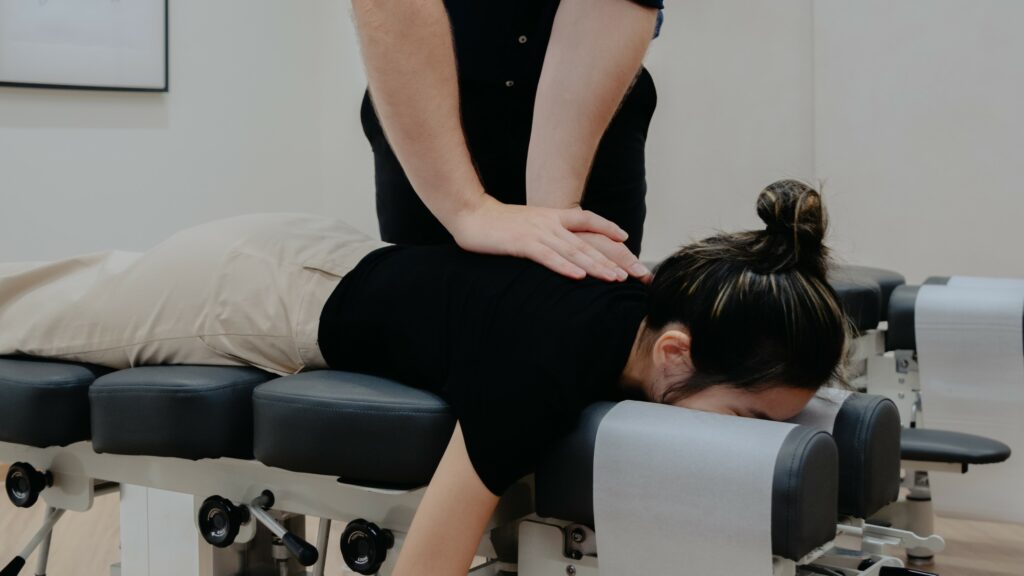
Pain is a complex issue that can disrupt your daily life, affecting everything from work productivity to your ability to enjoy time with family and friends. While the pain hacks and home remedies discussed can provide temporary relief, they only scratch the surface. These quick fixes may alleviate discomfort in the moment, but they don’t address the root cause of your pain. The body is an intricate system, and often, pain is a signal that something deeper needs attention.
More professional approaches, such as chiropractic care, offer long-term solutions that work on correcting the underlying issues causing your pain. Chiropractic adjustments realign the spine and improve nerve function, which not only helps with immediate relief but also promotes overall health and wellness. By addressing the misalignments and dysfunctions in your body, chiropractic care helps reduce pain at its source, preventing future flare-ups and supporting your body’s natural ability to heal.
Curious to learn if chiropractic care is for you? Book a spinal check-up with us to speak with our professionals today!




